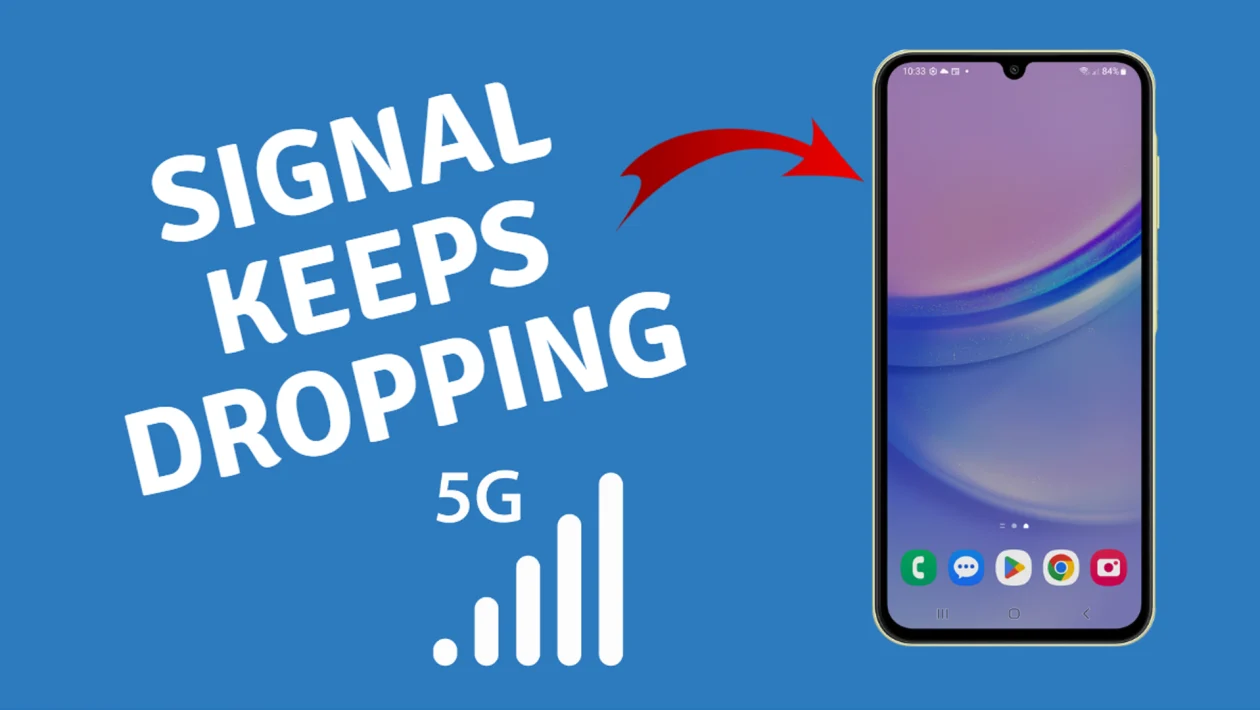A reliable cellular signal is crucial for your Samsung Galaxy A25’s functionality. Losing your signal can be frustrating, disrupting calls, texts, and internet access. This issue can stem from various software glitches, hardware problems, or network-related complications.
Sections
Why Does My Samsung Galaxy A25 Keep Losing Cellular Signal?
- Network outages: Your carrier may be experiencing temporary technical difficulties or maintenance in your area.
- Software glitches: Outdated software or buggy apps can interfere with network connectivity.
- SIM card issues: A damaged or improperly seated SIM card can cause signal problems.
- Signal interference: Physical obstructions like buildings or even your phone case can hinder signal strength.
- Incorrect network settings: Your phone might not be configured optimally for your carrier’s network.
1. Check for network outages
Checking for network outages is crucial because your carrier may be experiencing technical difficulties or maintenance, causing signal loss unrelated to your device. This step helps rule out carrier-related problems and prevents unnecessary troubleshooting on your phone.
Here’s how to check for network outages:
- Contact your carrier: Call their customer service or visit their website for service announcements.
- Check online resources: Websites like DownDetector often report widespread outages.
- Social media: Your carrier may post updates on platforms like Twitter or Facebook.
2. Toggle airplane mode
Toggling airplane mode forces your phone to disconnect from all cellular and Wi-Fi networks, then re-establish those connections, potentially fixing temporary glitches that might be causing signal loss.
Here’s how to toggle airplane mode:
- Swipe down from the top of the screen to access the Quick Settings panel.
- Find the airplane mode icon (it looks like an airplane).
- Tap the icon to turn airplane mode on (it will usually change color or become highlighted).
- Wait a few seconds, then tap the icon again to turn airplane mode off.
3. Restart your phone
Restarting your phone clears temporary glitches and refreshes the operating system, potentially resolving signal-related issues.
- Press and hold the power and volume down buttons.
- Tap on the “Restart” option that appears on the screen.
- Your phone will shut down and automatically turn back on.
4. Reseat the SIM card
Reseating the SIM card can help re-establish a proper connection between the card and your phone’s internal contacts, potentially fixing signal issues caused by minor misalignment or dust buildup.
Here’s how to reseat your SIM card:
- Turn off your phone.
- Locate the SIM card tray (usually on the side or top of the phone).
- Use a SIM ejector tool or a paperclip to gently open the tray.
- Carefully remove the SIM card.
- Gently reinsert the SIM card, ensuring it’s correctly aligned.
- Push the SIM card tray back into the phone.
- Turn your phone back on.
5. Manually select network operator
Sometimes your phone might not automatically connect to the strongest available network, leading to signal problems. Manually selecting your carrier’s network forces the phone to establish the best possible connection.
Here’s how to manually select a network operator:
- Go to “Settings”.
- Tap on “Connections”.
- Select “Mobile networks”.
- Choose “Network operators”.
- Turn off “Select automatically”.
- Select your carrier from the list of available networks.
6. Reset mobile network settings
Resetting mobile network settings clears stored Wi-Fi networks, Bluetooth pairings, cellular settings, and VPN configurations, potentially resolving connectivity glitches that might be causing your signal loss.
Here’s how to do it:
- Open the Settings app.
- Tap on “General management”.
- Tap on “Reset”.
- Select “Reset mobile network settings”.
- Tap “Reset settings” to confirm.
7. Update the device software
Software updates often contain patches and fixes for bugs that could be causing signal loss issues.
- Go to your phone’s Settings.
- Find and tap “Software update” (the exact name may vary slightly).
- Tap on “Download and install” if an update is available.
8. Check for app conflicts
Sometimes recently installed apps can interfere with your phone’s network functionality, causing signal loss or other connectivity problems.
Identifying and removing these conflicting apps can potentially resolve the cellular signal issues you are experiencing.
Here’s how to check for app conflicts:
- Safe Mode: Restart your phone in Safe Mode (usually involves holding the power button and volume buttons simultaneously).
- Observe: If the signal issue disappears in Safe Mode, a recently installed app is likely the culprit.
- Uninstall: Systematically uninstall recently installed apps, restarting after each removal, to pinpoint the problematic app.
9. Contact carrier
Your carrier may be able to troubleshoot network problems on their end, offer a SIM card replacement, or provide more advanced technical support. This allows them to check for issues specific to your account, SIM card status, or potential network configuration problems.
- Find your carrier’s customer service phone number (usually found on their website).
- Call them and explain that you’re experiencing frequent cellular signal loss with your Samsung Galaxy A25.
- Provide your account information and any relevant details about the problem.
- Follow their troubleshooting instructions or guidance.
Final thoughts
By following these steps, you should be able to resolve the cellular signal issues on your Samsung Galaxy A25 and restore reliable connectivity. If the problem persists, consider a factory reset (back up your data first!) or seek professional help from Samsung support.
